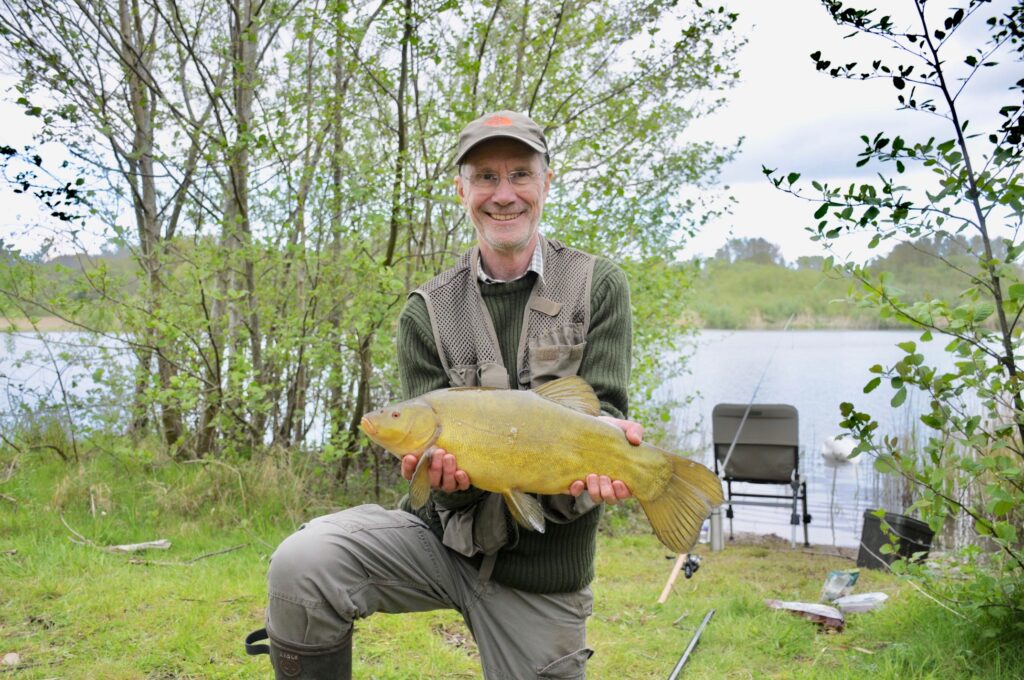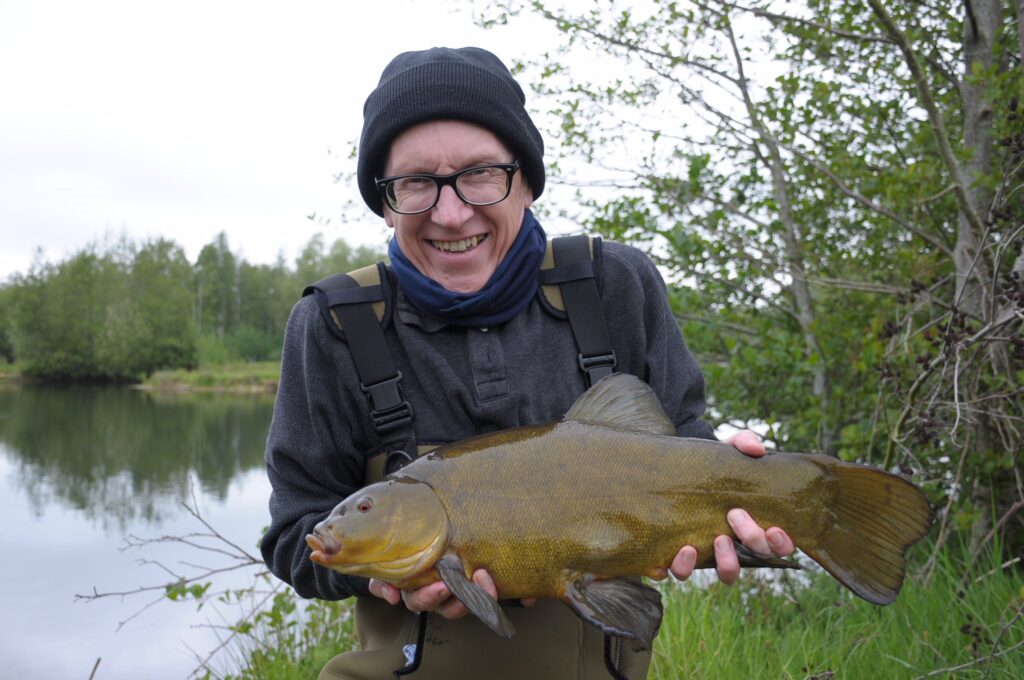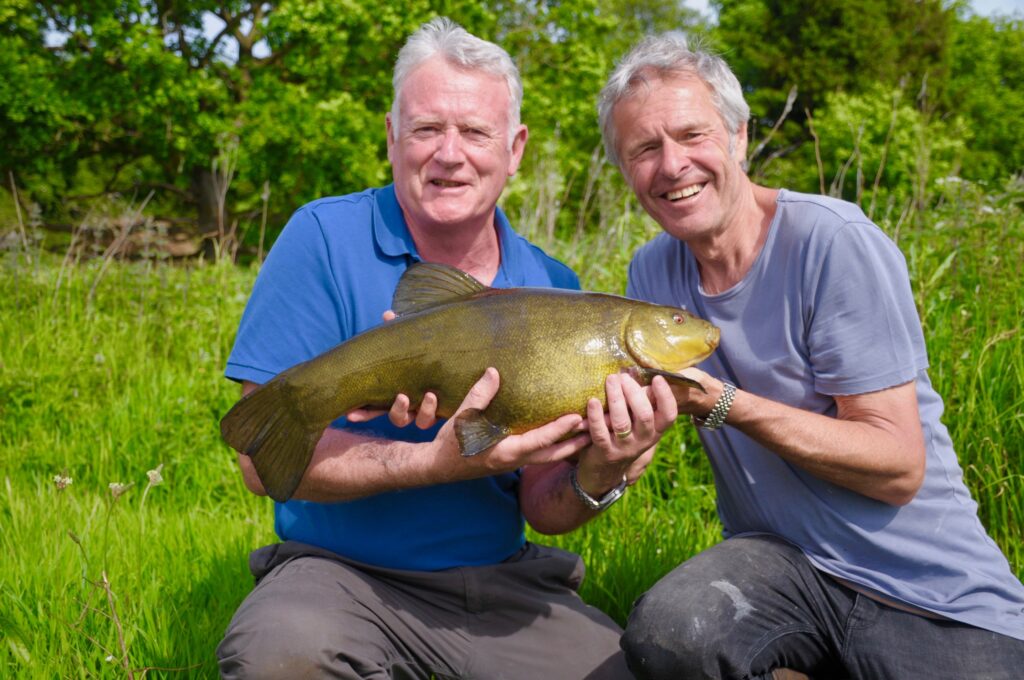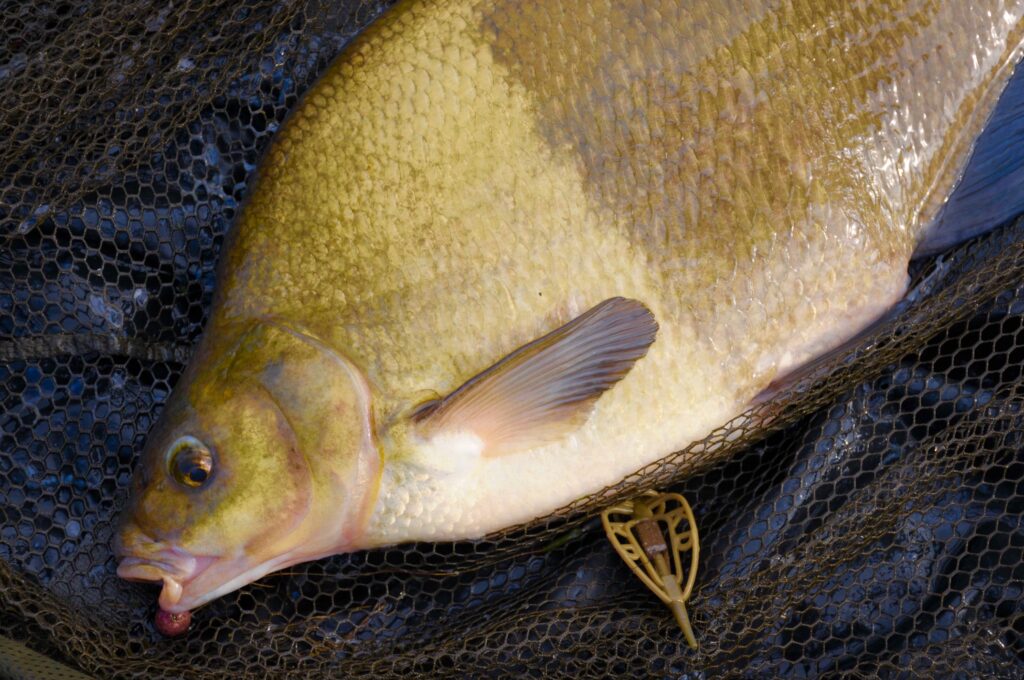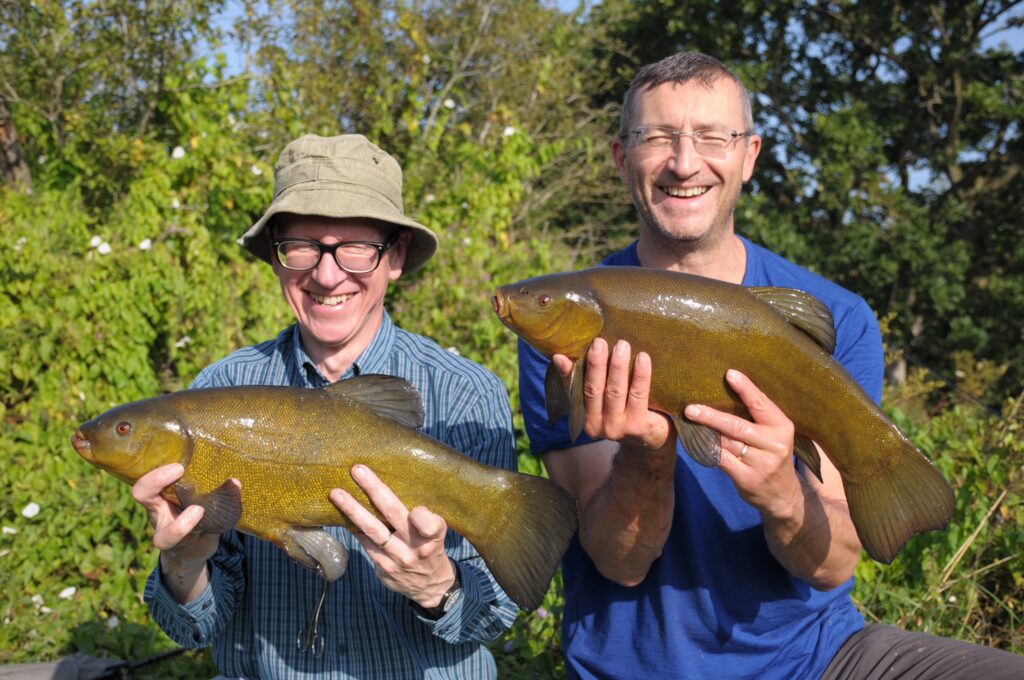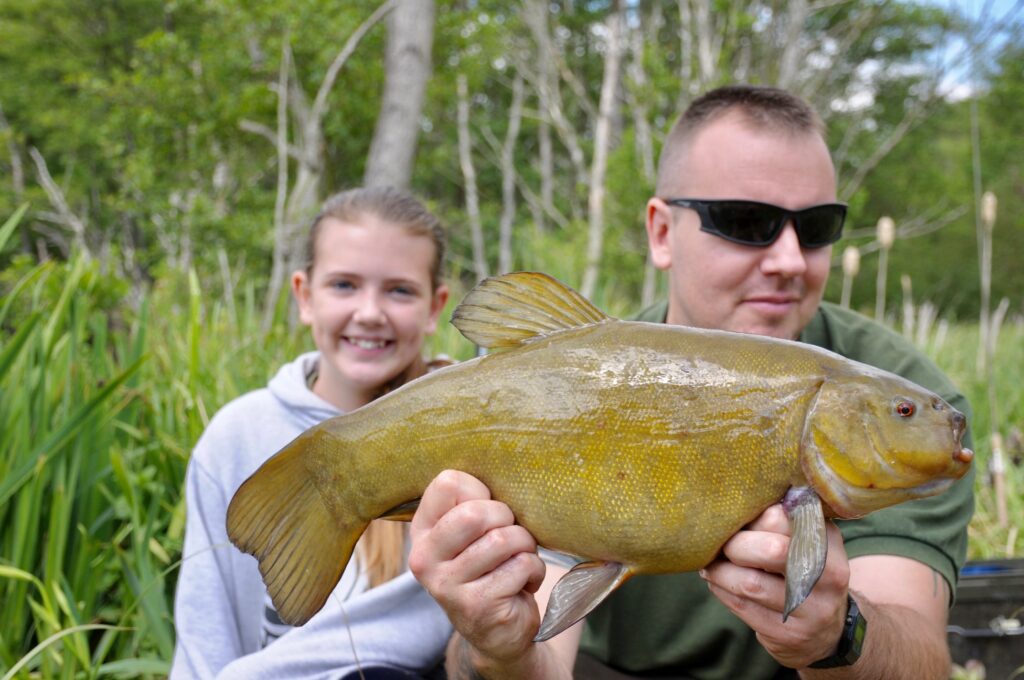#10 TENCH TODAY
Why have tench grown so big this past quarter century? This is the question I am asked on almost every tench session, and with good reason. In “The Big Fish Scene” (published 1978) editor Frank Guttfield described the legendary Len Head as the most successful tench angler of all time because he had landed the most tench over seven pounds (six of them) and the biggest brace ever (8.02 and 7.01). It is not unusual for my clients to land a dozen or more seven pounders in a day, with several eights and nines thrown in. Nor is that from a single water. On many Eastern gravel pits that is all but the norm.
That is a part of the answer. Much modern tench fishing is done on gravel pits, whereas until around 1980, estate lake and pond tenching was more common. I remember John Wilson and I trying to catch tench from Taverham pit in 1975, and not knowing where to start, and finding there was little help to be had from any source whatsoever.
WARMER WINTERS
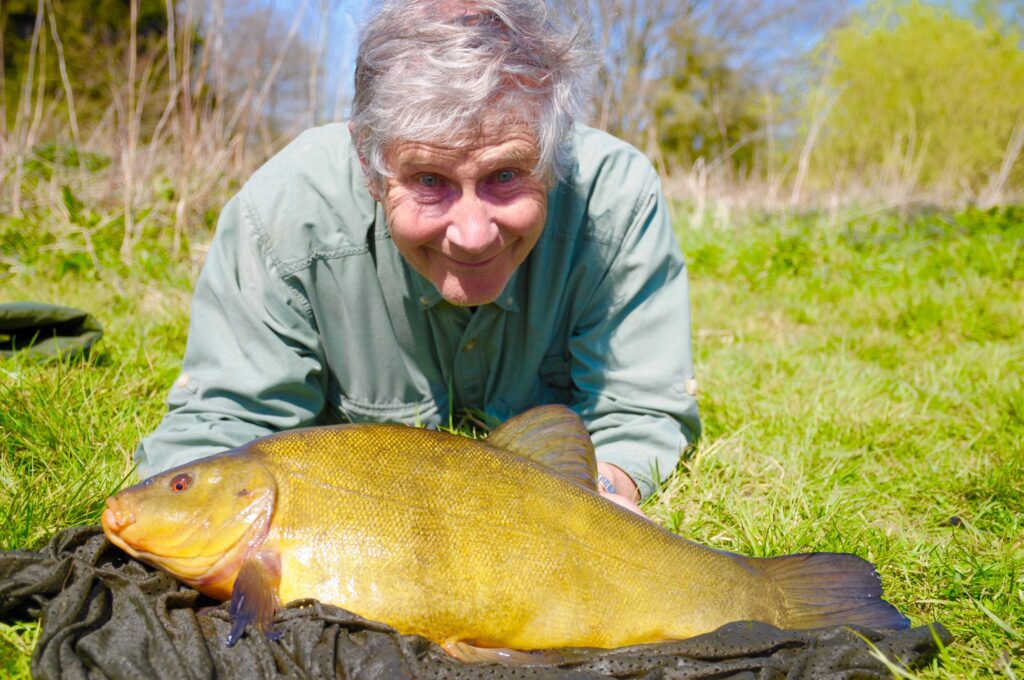

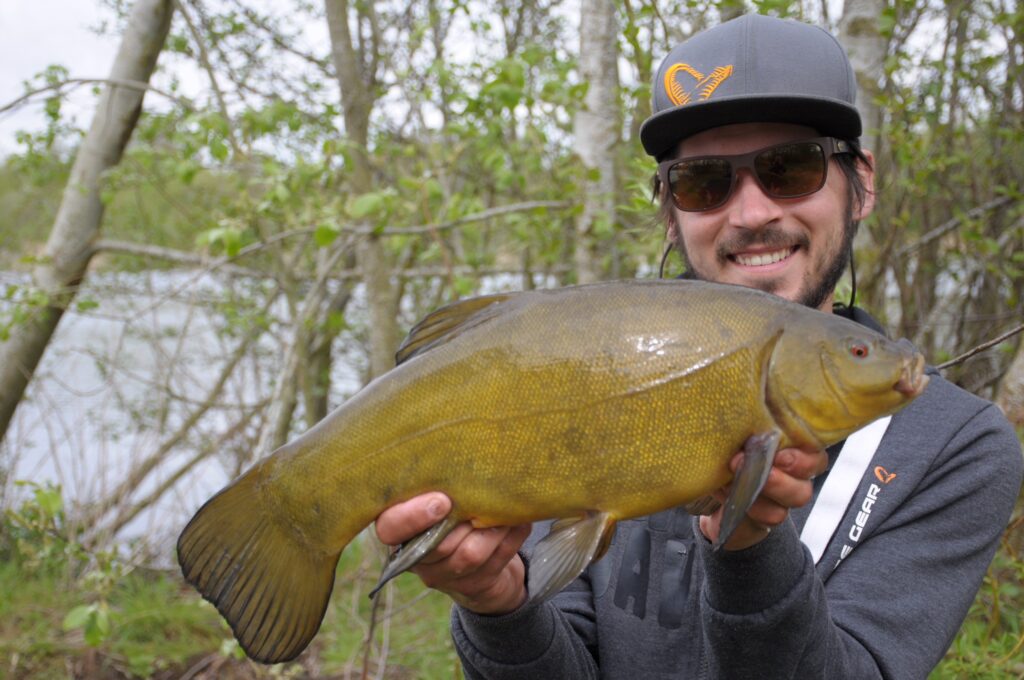

However, today, many of the estate lakes where tench have not been ottered are producing big fish, so gravel pits do not provide the complete answer. It is commonly said that tench grow big on high protein boilie baits that are used by carp anglers, and I am sure they do. But I can think of many non-carp waters where tench have never seen a boilie, but where they are still double the size they were in the 1980s, so there has to be something else. My feeling is warmer winters have a huge amount of influence. When we were boys, especially in the North, snow lay on the ground two months of most years, and tench lay pretty dormant for four-five months of the year. Their growth periods were therefore much restricted then, whereas today my carp syndicate boys catch plenty of tench in January, and huge numbers in February. Surely more months feeding mean more pounds and ounces added?
Let’s add cormorant predation to the argument. Without doubt, the numbers of silver fish in all the pits I know well (about 19 of them) are vastly reduced this century because of devastating predation. This has to be an influence on growth rates because far more natural food is left for tench to harvest and profit from.
TENCH… TWENTY YEARS FROM NOW
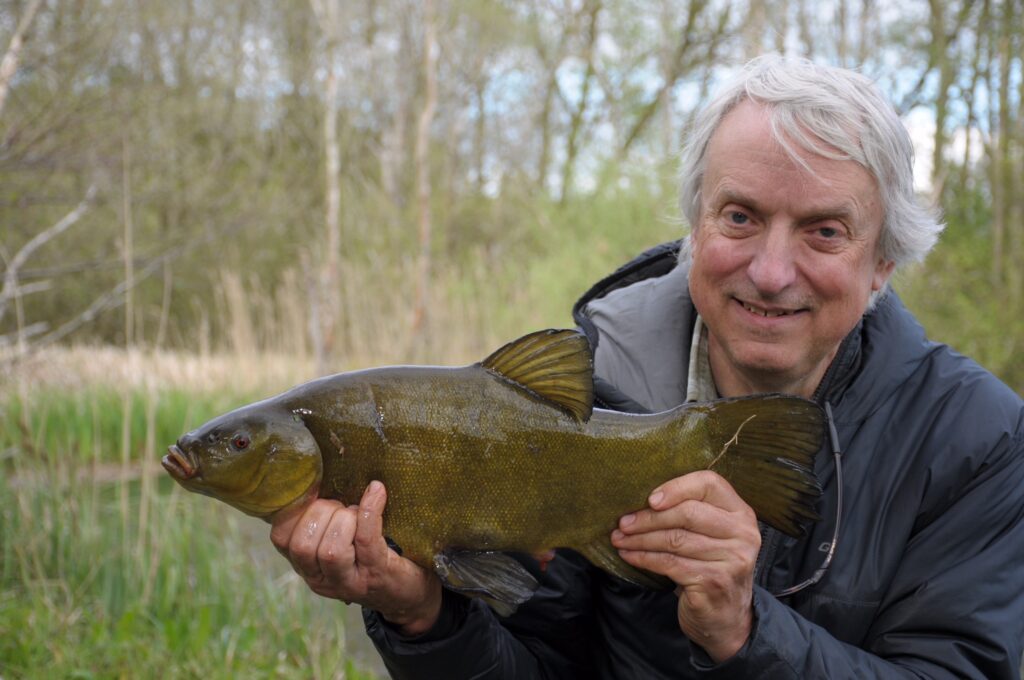

This does raise the question of where tench fishing will be in twenty years time when our present “monster” fish gradually die away. I have no doubt cormorants enjoy a half pound tench breakfast, as much as they do one of roach, and this has to have an effect on natural recruitment of stocks. The only saving grace, perhaps, is the fact that small tench spend a lot of time deep in weed beds, so this might prove to be a useful survival technique.
The size of a water plays a part. Estate lakes are not as vital to the tench scene as they were, because being small and shallow, they are easily denuded by otter attention. A smaller, shallower water simply gives tench fewer places to hide. Much deeper gravel pits seem to be considerably less otter-friendly and although I haven’t asked them this, I have lots of evidence to suggest otters do not feel happy at 18 feet plus. If anyone knows an otter who speaks English, send him round to me please.
TAKE CARE WHEN STOCKING CARP
Small waters, gravel pits especially, can produce tench just as large as the huge pits I know, so size of water is not necessarily a factor. However, smaller pits generally have fewer tench numbers in them, and populations can wither over decades. More importantly, if a smaller pit is stocked with carp, the introduced species can dominate very quickly and leave tench stocks fatally weakened. This does not always happen, but it can, so treat carp introductions warily please.
Of course, whilst I believe in what I have written because it is based on decades of experience, we can never be sure. For example, let’s look at tench abroad. In my youth, the magic of Ireland was all-pervading. The questionable Ray Webb was still viewed as a hero, and when he went to live in Ireland, we expected records to tumble. They never did, and as far as I am aware, a six pound Irish fish is still a good one. (As it is here, I hasten to add. Big fish are nice but I have never felt they are the be-all and end-all, and nor should they be.) I have fished in many countries where you would have expected colossal tench and I have been disappointed. The Ural Delta is a case in point. There are huge rudd and perch there, but a three kilo tench was regarded as a cracker by my guides.
MARKED FOR LIFE
I have always found tench most interesting creatures to study as well as catch. As we all know, sexing them is easy because of their obliging pelvic fins. (Males have huge scallop-shaped pelvics, whereas females have dainty leaf-shaped ones – as is only fitting and to be expected.) Tench also lead long and dangerous lives. Old otter scars are often found on their flanks and tail fins are frequently left tattered for life. Cormorant stabs tend to heal but remain visible, and big pike will always have a go, even at a five pounder. The only good thing from our point of view is that individual tench can be very recognisable because of their wounds, and I have known some adult fish to appear from time to time over fifteen-plus seasons. I tend to believe, therefore that our tench can reach twenty five years of age, perhaps more.
I also find that in many waters the sexes tend to stick together, and that you will catch males predominantly from one spot and females from another. This is not set in stone, and the sexes will mix to a degree, especially at spawning time (obviously!) but also to profit from a binge-type food source, like spawning carp shedding vast numbers of juicy eggs. I have found it interesting too that tench that live close to alders and over thick silt tend to be darker in colour, whereas those spending their lives in open, sandy areas of a water are that rich yellow/bronze colour we so adore.
TENCH DESERVE SOME TLC
So, tench are fascinating, beautiful, and a delight to catch, and they deserve all our care and attention. I hate to see tench caught too often on out-and-out carp rigs, as their mouths can be terribly mutilated by strong-arm playing tactics with four pound test curve rods and braid hook lengths. Playing tench softly but firmly is the way. Also, because tench are reasonably easy to deal with on the bank, do not think they are enjoying the experience. Make weighing and photography as quick as possible, and my plea is to forget keepnets entirely, especially in hot weather. The ultimate warning is when a tench exhibits two-tone colouring, as this is a sign that stress is really setting in. Bream are the most frequent species to show this tendency, but pike are not far behind.
We should be proud to be anglers, but we should feel privileged too, and be ashamed to ever abuse our fish-catching skills.











